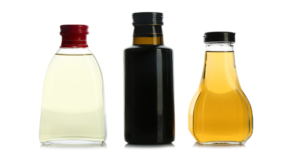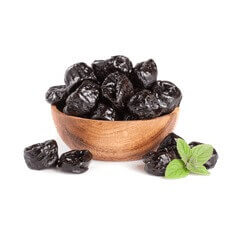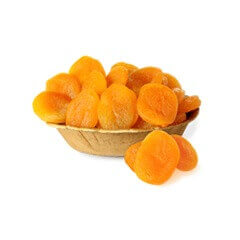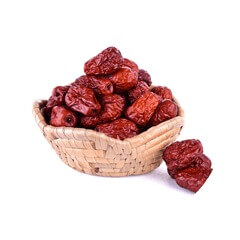Rice Vinegar: How to Use It and Replace It?
Essential in Asian cuisine, particularly Japanese cuisine, rice vinegar is used in many sweet and savoury recipes. Mainly known for making sushi rice, rice vinegar is also used to make sweet and sour sauces or to prepare marinades for meat, fish and vegetables.
Indeed, depending on the Asian country where you are staying, you will discover several types of rice vinegar! In China and Korea, it is dark in colour and full-bodied in taste, while in Vietnam, it is spicy.
This new article will explain how rice vinegar is made and how to use it in the kitchen and bathroom! We will also look at the benefits of rice vinegar and the precautions to take with it.
What Is Rice Vinegar?
History and origin of rice vinegar
Believe it or not, although rice vinegar is associated with Japanese cuisine, it comes from China! In its early days, rice was not the only cereal used to make vinegar, the Chinese also used millet, wheat and barley.
Later, during the 4th century, rice vinegar made its way to Japan. When it arrived, its success was not obvious. Still, with the expansion of rice cultivation, vinegar eventually became more democratic. It ended up becoming an essential part of Japanese dishes. Today, there are different types of rice vinegar: white rice vinegar, red rice vinegar, and black rice vinegar. These different types of vinegar depend on the ingredient used to make them!
Good to know: rice vinegar was mainly medicinal before being used in cooking! Manuscripts dating from the 1300s mention it as a preventive ingredient to fight against the poison of certain fish and vegetables. It was used both in ingestion and in the cutaneous application.
Types of Rice Vinegar: White, Black and Red
Although there are several, there are three main types of rice vinegar:
- White or “normal” rice vinegar. This vinegar is the most widely used in Japan and is translucent to pale yellow. There are two types of white rice vinegar: “komesu” and “kasuzu.” The former is produced with water and fermented rice, while the latter is produced from fermented rice wine.
They are mainly used for vinegar rice, fried rice or crunchy vegetables.
- Black rice vinegar. The basis of his recipe is brown rice alcohol or fermented brown rice. To obtain its powerful taste, this type of vinegar, called “kurozu,” will ferment for an average of one year before being put on sale.

It is used to season soups, steamed ravioli or meat marinades.
- Red rice vinegar. More used in China, red rice vinegar (called “akasu”) looks black but has a lighter taste. To do this, we use the lees of sake (rice puree freed from alcohol after pressure).
It is ideal for making tasty sauces and enhancing the taste of a noodle dish or soup.
You may also hear of ‘kokumotsu,’ a rice vinegar made from rice and other grains. Its taste is richer than that of white rice vinegar.
Production of Rice Vinegar
Like most vinegar, rice vinegar is made by fermenting ingredients. The basic ingredients of the rice vinegar recipe are fermented rice or rice wine (rice wine or sake).
Nowadays, there are two qualities of vinegar:
- Those made industrially, obtained from extracts of rice, sake lees and acetic acid
- Those made in the traditional way, obtained from sake or fermented rice.
Purists do not consider industrial rice vinegar quality condiments and prefer to cook with traditional vinegar!

Benefits and Uses of Rice Vinegar
Calories and Nutritional Qualities of Rice Vinegar
The composition of rice vinegar allows it to offer various nutritional qualities to the body. Its richness in potassium relieves joint pain, and the minerals it contains (zinc, selenium, copper, manganese) contribute to the proper functioning of the body. Rice vinegar is also gluten-free and rich in amino acids. As a reminder, amino acids are essential for the proper functioning of the body. As some of them are only provided by food, it is essential to consume ingredients or condiments that contain them!
The alkalinity of rice vinegar makes it ideal for maintaining an acid-base balance in the body, and its tangy side makes it a recognized antiseptic. Suppose the purchased rice vinegar only contains fermented rice or rice wine. In that case, the latter can also balance the blood sugar level.
Be careful; some rice vinegar contains a lot of sugar, which can cause a spike in blood sugar. To avoid this kind of product, look at the labels and turn to organic rice vinegar!
From a calorie point of view, rice vinegar is one of the least caloric vinegar: 3 kcal per 100 g of rice vinegar, against 217 kcal for balsamic vinegar and 22 kcal for cider vinegar.
How to Replace Rice Vinegar?
Apple cider vinegar is the best replacement for rice vinegar in any recipe. Its light, sweet and balanced taste can easily replace that of rice vinegar without disturbing the balance of a dish. Be careful; if you have a fine palate, avoid using it for marinades, as they tend to bring out the apple taste!
Rice vinegar for hair
White rice vinegar can also be used on the hair since, like apple cider vinegar, it takes care of it, makes it stronger, and makes it shine. So how do you use rice vinegar on hair? Two solutions are available: use it as a rinse vinegar (500 ml of water for 2 tbsp. of rice vinegar) or as a hair mask. To do this, simply wash your hair, rinse it and let the rice vinegar rinse water sit for 10 minutes before rinsing with clear water.
Good to know: we also hear a lot about the benefits of rice water for hair. In reality, the rice water used on the hair is water that the rice has been soaked in before being left aside for a few days to ferment. Using rice vinegar on the hair is like using rice water!
Visit the ADNOOR website for the best Long-Grain Basmati Rice, Premium Long Grain Sella Rice, white rice, Brown Super Kernel Basmati Rice, nuts, seeds, and dried fruits. We take pride in saying that we are the Best Basmati rice brand in Canada and have been the importers, exporters, wholesalers, distributors, and co-packers of various nuts and grains in Canada for the last 25 years. So, without wasting time, visit our website and order what you need.








